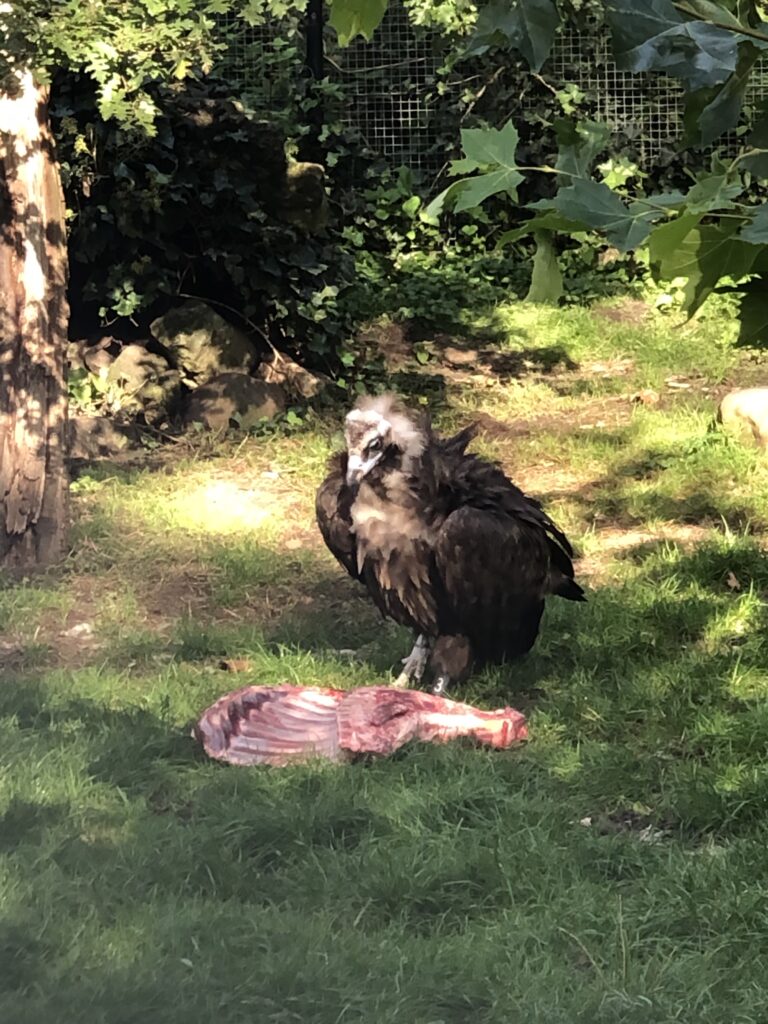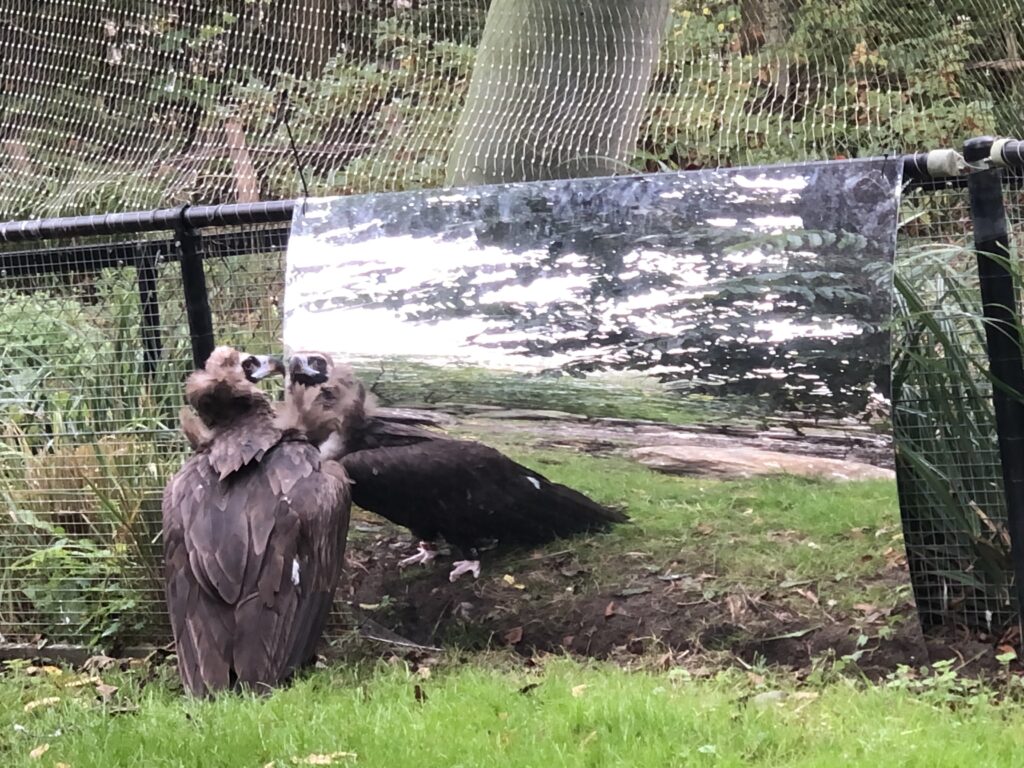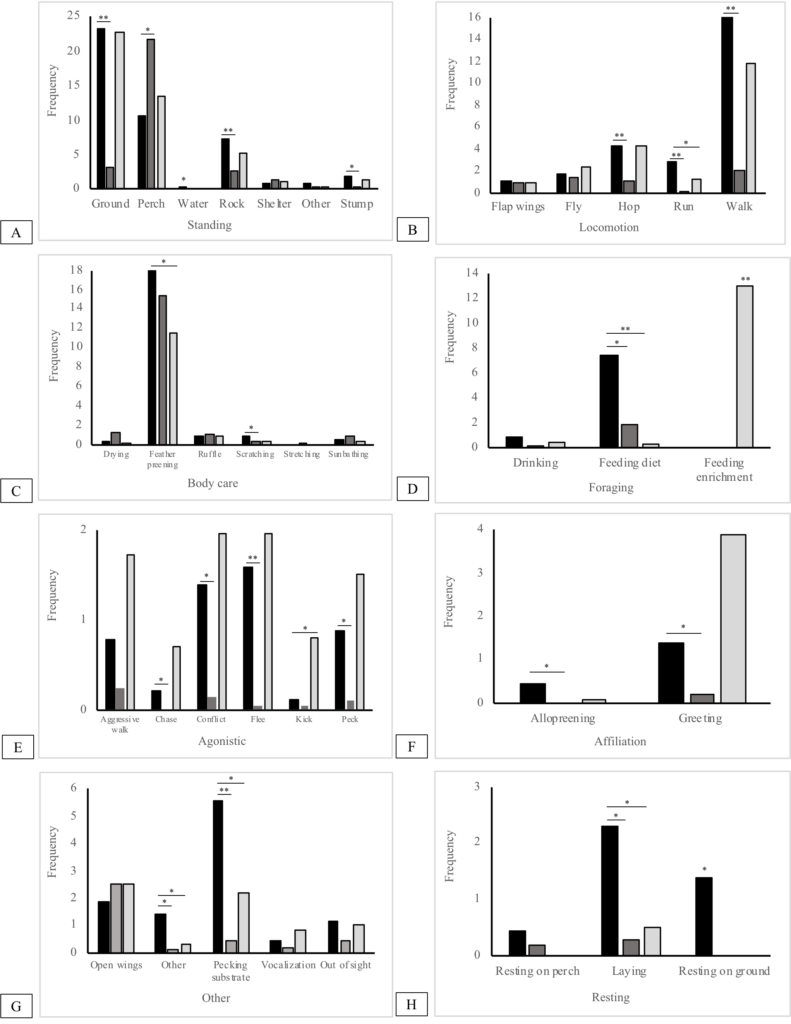Interactions with enrichment items
The vultures were observed interacting with only two of the enrichment items: the large carcass (522 times) and the mirror (16 times).


Comparison of the behavioural categories between the baseline period, the large carcass and mirror enrichment
A. Mirror vs. baseline period
None of the behavioural categories were significantly or non-significantly higher in frequency during the mirror enrichment compared to the baseline period.
B. Large carcass vs. baseline period
The behavioural category agonistic was significantly higher in frequency during the large carcass enrichment compared to the baseline period. Feeding and affiliative had a non-significantly higher frequency during the large carcass enrichment compared to the baseline period.

Comparison of the single behaviours between the baseline period, large carcass and mirror enrichment.
A. Mirror vs. baseline period
Standing on perch was the only single behaviour that was significantly higher in frequency during the mirror enrichment compared to the baseline period. Standing on shelter, drying, ruffle, sunbathing, and open wings had a non-significantly higher frequency during the mirror enrichment compared to the baseline period.
B. Large carcass vs. baseline period
Feeding enrichment and kick were the only single behaviours that were significantly higher in frequency during the large carcass enrichment compared to the baseline period. Standing on perch, standing on shelter, fly, aggressive walk, chase, conflict, flee, peck, greeting, opening wings and vocalization had a non-significantly higher frequencies during the large carcass enrichment compared to the baseline period.
